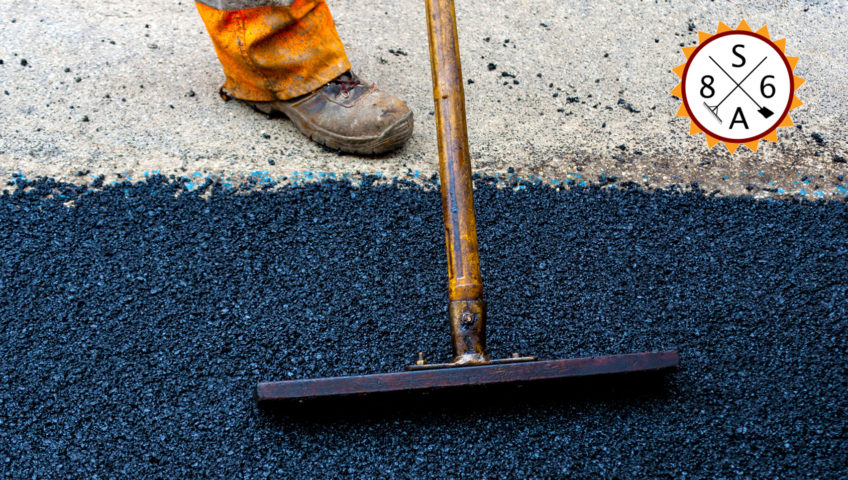
4 Ways Asphalt Paving in Colorado Helps the Community
Asphalt paving is a vital part of the transportation infrastructure for Colorado. This type of pavement provides a safe, cost-effective and environmental friendly for the roads, bridges and parking areas. It plays a significant role in the Colorado community. Asphalt pavements is a combination of aggregates of stone, gravel or sand that are bound together using some asphalt cement, which is derived from crude oil.
A large percentage (94%) of American roads and highways are paved with asphalt. Construction and maintenance of these smooth asphalt pavements is cost-effective, eco-friendly, and completely recyclable. They offer a safe and long-lasting surface for all types of transportation modes such as foot trails, bike trails, roads and airport runways.
Some benefits of asphalt paving are:
1. Quieter Roads
Noise pollution is everywhere. One of the best ways to lower road noise is to deal with the issue at its source. By using asphalt pavements on roadways, noise in residential areas and businesses can be lowered significantly. Stone Matrix Asphalt can reduce road noise by 3-5 dB(A). Using asphalt to combat highway noise is even more effective than noise barrier walls.
2. Recyclable
Asphalt pavement and processing facilities have very low carbon footprint. Asphalt Pavement Alliance says that production of asphalt pavements emits less greenhouse gases compared to other concrete pavements. Asphalt pavements are highly recycled in America. 100 million tonnes of this type of pavements are reclaimed every year, and out of that, more than 95 percent is recycled or reused, thus saving the taxpayers money and less use of landfills.
Sustainability is very important in today’s society. Asphalt can be used over and over again, like an infinite life cycle. This one of the biggest reasons why asphalt is popularly used across the country. Most companies strive to use environment friendly materials; the recyclable nature of asphalt makes it a great product.
3. Create new jobs
A career in the asphalt industry means job security. Road construction is always happening in Colorado; new roads are being installed while existing roads require regular maintenance to enhance safety. From repairing potholes, to filling cracks, asphalt contractors are always busy trying to keep the Colorado roads clear, smooth and safer for drivers. Furthermore, construction of new business buildings means a need for parking lots installation as well as regular maintenance, which means job security in this field is great.
The asphalt pavement industry offers: local jobs that are usually pay well and last for long, heightened community transport infrastructure, improved standards of living for the local people, eco-friendly products, and economic development.
4. Asphalt is great for winter roads
Winter can be hard on pavements; the freezing, thawing, deicers, plowing and the immense weight of plow trucks contribute more to the damaging effects of the cold weather. However, some pavements can hold up better than other during this season.
Extreme winter weather can ruin paved surfaces. Asphalt pavement is not only quick to install, but is resistant to harsh weather too. Asphalt roadways can be able to withstand cold temperatures during weather in both the low traffic and high traffic areas.
Hot-mix asphalt is the best when it comes to ensuring that the roadways are free of potholes and cracks during winter. It is asphalt pavement that is poured immediately after mixing aggregates of sand and stone with petroleum on to the road while the mixture is still hot. The hot-mix asphalt is strong and long-lasting, resistant to freezing and thawing, not affected by deicing agents, flexible, cost-effective, and needs little maintenance.
Asphalt paving is a vital part of the transportation infrastructure for Colorado. This type of pavement provides a safe, cost-effective and environmental friendly for the roads, bridges and parking areas. It plays a significant role in the Colorado community. Asphalt pavements is a combination of aggregates of stone, gravel or sand that are bound together using some asphalt cement, which is derived from crude oil.
A large percentage (94%) of American roads and highways are paved with asphalt. Construction and maintenance of these smooth asphalt pavements is cost-effective, eco-friendly, and completely recyclable. They offer a safe and long-lasting surface for all types of transportation modes such as foot trails, bike trails, roads and airport runways.
Some benefits of asphalt paving are:
1. Quieter Roads
Noise pollution is everywhere. One of the best ways to lower road noise is to deal with the issue at its source. By using asphalt pavements on roadways, noise in residential areas and businesses can be lowered significantly. Stone Matrix Asphalt can reduce road noise by 3-5 dB(A). Using asphalt to combat highway noise is even more effective than noise barrier walls.
2. Recyclable
Asphalt pavement and processing facilities have very low carbon footprint. Asphalt Pavement Alliance says that production of asphalt pavements emits less greenhouse gases compared to other concrete pavements. Asphalt pavements are highly recycled in America. 100 million tonnes of this type of pavements are reclaimed every year, and out of that, more than 95 percent is recycled or reused, thus saving the taxpayers money and less use of landfills.
Sustainability is very important in today’s society. Asphalt can be used over and over again, like an infinite life cycle. This one of the biggest reasons why asphalt is popularly used across the country. Most companies strive to use environment friendly materials; the recyclable nature of asphalt makes it a great product.
3. Create new jobs
A career in the asphalt industry means job security. Road construction is always happening in Colorado; new roads are being installed while existing roads require regular maintenance to enhance safety. From repairing potholes, to filling cracks, asphalt contractors are always busy trying to keep the Colorado roads clear, smooth and safer for drivers. Furthermore, construction of new business buildings means a need for parking lots installation as well as regular maintenance, which means job security in this field is great.
The asphalt pavement industry offers: local jobs that are usually pay well and last for long, heightened community transport infrastructure, improved standards of living for the local people, eco-friendly products, and economic development.
4. Asphalt is great for winter roads
Winter can be hard on pavements; the freezing, thawing, deicers, plowing and the immense weight of plow trucks contribute more to the damaging effects of the cold weather. However, some pavements can hold up better than other during this season.
Extreme winter weather can ruin paved surfaces. Asphalt pavement is not only quick to install, but is resistant to harsh weather too. Asphalt roadways can be able to withstand cold temperatures during weather in both the low traffic and high traffic areas.
Hot-mix asphalt is the best when it comes to ensuring that the roadways are free of potholes and cracks during winter. It is asphalt pavement that is poured immediately after mixing aggregates of sand and stone with petroleum on to the road while the mixture is still hot. The hot-mix asphalt is strong and long-lasting, resistant to freezing and thawing, not affected by deicing agents, flexible, cost-effective, and needs little maintenance.




